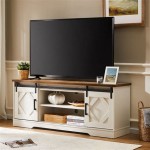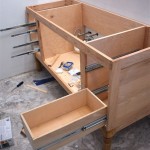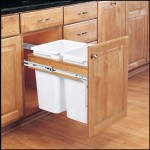Placement Of Handles On Shaker Cabinets: A Comprehensive Guide
Shaker cabinets, renowned for their simple, clean lines and timeless appeal, offer a versatile canvas for hardware. The placement of handles on these cabinets plays a crucial role in both functionality and aesthetics. Incorrect handle placement can disrupt the visual harmony of a kitchen or bathroom and impede ease of use. Understanding the principles behind proper handle placement ensures a cohesive and efficient design.
This article provides a comprehensive guide to handle placement on Shaker cabinets, covering recommended positions for various cabinet types, factors to consider, and tips for achieving a professional finish. The information presented aims to assist homeowners, designers, and cabinet installers in making informed decisions regarding hardware placement.
Key Point 1: General Principles of Handle Placement on Shaker Cabinets
Several general principles guide handle placement on Shaker cabinets. These principles prioritize both functionality and visual balance. Adhering to these guidelines ensures that the hardware complements the cabinet design and enhances the overall user experience.
Consistency is paramount. Maintaining a consistent handle placement across all similar cabinets creates a unified and professional look. This consistency applies to both horizontal and vertical positioning. Measure carefully and mark each cabinet before installation to ensure uniformity.
Consider the "rule of thirds." This design principle, widely applied in art and photography, can also be applied to handle placement. Positioning handles approximately one-third of the way from the top or bottom of a cabinet door can create a visually appealing balance. However, this is merely a guideline, and adjustments may be necessary based on the specific cabinet dimensions and door style.
Prioritize accessibility. Handles should be placed in a location that is easily accessible and comfortable to grip. Consider the height of the primary users and adjust the handle placement accordingly. Avoid placing handles too high or too low, as this can strain the user.
Account for cabinet function. The function of the cabinet should influence handle placement. For example, frequently used cabinets may benefit from handles placed in a more accessible location. Cabinets containing heavy items may require handles that provide a more secure grip.
The stile and rail construction of Shaker cabinets provides visual cues for handle placement. The recessed panel is framed by a stile (the vertical frame member) and a rail (the horizontal frame member). Often, handles are positioned in relation to these. This alignment can contribute to a balanced and harmonious design.
Key Point 2: Specific Recommendations for Different Cabinet Types
Handle placement varies depending on the type of cabinet. Drawers, base cabinets, wall cabinets, and pantry cabinets each require specific considerations to optimize both functionality and aesthetics.
Drawers: Handles are typically centered on the drawer front. For wider drawers, two handles may be preferred. When using two handles, they should be placed equidistant from the center of the drawer. The distance between the handles should be proportional to the drawer width. Avoid placing handles too close to the edges of the drawer, as this can weaken the drawer front. A good starting point is to place the center of the handle approximately 2-3 inches from the top edge of the drawer. For very tall drawer fronts, consider placing the handle closer to the middle to improve leverage and balance.
Base Cabinets (Doors): Handles on base cabinet doors are commonly placed in the upper corner opposite the hinges. This allows for easy access when opening the cabinet. The placement should be consistent across all base cabinet doors. Aim for a position approximately 2-3 inches from the top and side of the door. This location generally provides a comfortable grip and avoids interference with adjacent cabinets or appliances.
Wall Cabinets (Doors): Handles on wall cabinet doors are typically placed in the lower corner opposite the hinges. This mirrors the placement on base cabinets, creating a visually cohesive design. The same principle of 2-3 inches from the bottom and side of the door applies. Consider the height of the users when determining the exact placement. Taller users may prefer a slightly higher placement.
Pantry Cabinets: Pantry cabinets often feature taller doors than standard cabinets. Handle placement should reflect this difference. For single-door pantry cabinets, a single handle is typically placed in the center of the door, approximately one-third of the way down from the top. For double-door pantry cabinets, a handle is placed on each door in the same location as standard base or wall cabinets. Consider using larger, more substantial handles for pantry cabinets to accommodate the increased door size and weight.
Specialty Cabinets: For specialty cabinets, such as corner cabinets or appliance garages, handle placement may require more customized solutions. Consider the unique function and design of the cabinet when determining the optimal handle location. Consult with a cabinet designer or installer for guidance on these more complex situations.
Key Point 3: Factors Influencing Handle Selection and Placement
Several factors influence handle selection and, consequently, handle placement. These factors include the overall kitchen design style, the cabinet hardware finish, handle style, and personal preferences.
Kitchen Design Style: The overall kitchen design style should inform the choice of handles. For a traditional Shaker kitchen, classic handle styles with simple lines and a matte finish may be preferred. For a more contemporary Shaker kitchen, sleek handles with a polished finish may be more appropriate. The handle style should complement the overall aesthetic of the kitchen.
Cabinet Hardware Finish: The cabinet hardware finish should coordinate with other finishes in the kitchen, such as the faucet, light fixtures, and appliances. Common cabinet hardware finishes include brushed nickel, stainless steel, oil-rubbed bronze, and matte black. A consistent finish throughout the kitchen creates a unified and polished look. Consider the undertones of the cabinet paint or stain when selecting the hardware finish. Warm-toned cabinets may pair well with bronze or gold hardware, while cool-toned cabinets may complement silver or nickel hardware.
Handle Style: The style of the handle can significantly impact the overall aesthetic of the cabinets. Knobs offer a more traditional look, while pulls provide a more modern and ergonomic grip. Cup pulls are a popular choice for drawers in Shaker kitchens, adding a vintage touch. Choose handles that are comfortable to grip and visually appealing.
Personal Preferences: Ultimately, handle placement is a matter of personal preference. Consider the preferences of the homeowner when making decisions about handle placement. Test different handle positions to determine what feels most comfortable and looks most aesthetically pleasing. Mock up handle placement using painter's tape before drilling any holes. This allows for experimentation and adjustments before committing to a final decision.
Handle Size and Projection The size of the handle should be proportional to the size of the cabinet door or drawer. Small handles on large doors can look inadequate, while overly large handles on small drawers can appear disproportionate. The projection of the handle, meaning how far it extends from the cabinet surface, is also important. Handles with a large projection can snag clothing or create obstacles in tight spaces.
Hardware templates Using hardware templates is highly recommended for achieving consistent and accurate handle placement. These templates provide precise markings for drilling holes and ensure that all handles are aligned properly. Hardware templates are available for various handle sizes and styles. They can be purchased online or at hardware stores.
Careful consideration of these factors contributes to a cohesive and functional handle placement strategy, enhancing the beauty and usability of Shaker cabinets.
By following these guidelines and considering the specific needs of each kitchen or bathroom, individuals can achieve a professional and aesthetically pleasing handle placement on their Shaker cabinets which will improve both function and design.

Shaker Cabinet Handle Installation With The Hardware Jig True Position Tools Youtube

4s And Skinny Narrow Shaker Hardware Placement Taylorcraft Cabinet Door Company

Cabinet Hardware Placement Guide For Shaker Cabinets

How To Install Handles And Knobs On Shaker Drawer Fronts True Position Tools

Kitchen Cabinet Handle Placement Dos And Don Ts Living Letter Home

Shaker Cabinet Handle Installation With The Hardware Jig True Position Tools
Cabinet Hardware Placement Where To Put Knobs And Handles Vevano

A Designer S Guide To Hardware Placement

Cabinet Hardware Placement Guide For Shaker Cabinets

Cup Pulls On Shaker Cabinets 10 Tips For Beautiful Kitchens








